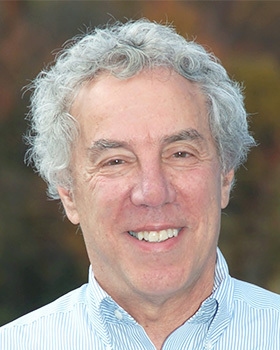Alaska Helps Remote Communities Shift to Renewables
Energy is a major concern in rural Alaska. Households in many regions spend over 20 percent of their annual income on heat and electricity. In some communities, more than half of average household income goes toward home heat and electricity. Although many of these homes consume very little electricity, electric rates and fuel costs are high, and the cold climate means that lots of energy is required to heat even energy-efficient homes. Numerous small and remote Alaskan communities run on stand-alone electric grids and rely heavily on diesel fuel generators. Because Alaska does not have a statewide highway system, fuel is barged from Seattle to regional distribution centers, then delivered locally by air or boat. Winter weather can make deliveries impossible, so rural communities have to store 8 to 13 months’ worth of fuel onsite in tank farms to avoid fuel shortages.
Alaska is investing in renewable energy projects to provide remote communities with more secure and lower-cost energy. One notable example is the City of Kodiak on the Gulf of Alaska. Before 2008, Kodiak produced about 60 percent of its electricity from hydro and the balance from diesel fuel. Today Kodiak generates more than 99 percent of its power from hydro and wind energy, thanks to grants from the Alaska Renewable Energy Fund.
The Renewable Energy Fund, administered by the Alaska Energy Authority (AEA), was created in 2008. Its goal is to help the state generate 50 percent of its electricity from renewable sources by 2025. The fund awards about $25 million yearly to utilities, independent power producers, local governments and tribal councils. AEA evaluates proposals, then recommends projects to the state legislature for funding. AEA focuses on projects that it judges will deliver significant public benefits and that are located in high-cost areas.
Kodiak’s Transition to Renewable Energy
About 14,000 people live on Kodiak Island, which is home to Alaska’s biggest fishing port and the largest Coast Guard base in the United States. Kodiak Electric Association (KEA), a local cooperative, operates the island’s microgrid. In 2007, KEA’s board set a goal of generating 95 percent of its electricity from renewable sources by 2020. By 2014 it had already surpassed that goal, producing more than 99 percent of its power from wind and hydropower supported by a battery energy storage system.
The Renewable Energy Fund awarded a total of $16 million to Kodiak to install six 1.5 megawatt wind turbines; add a third 10-megawatt turbine to its existing hydropower facility; and a three-megawatt battery storage system, which eliminates the need to curtail generation from Kodiak’s wind turbines and provides spinning reserve capacity in combination with the island’s hydropower facility. In 2014, Kodiak installed the newest phase of its renewable upgrades: two one-megawatt flywheels to power a new electric crane at the busy port of Kodiak, replacing a diesel crane.
“Without the Alaska Energy Authority, we could not have done it nearly this fast,” says Darron Scott, president and CEO of the Kodiak Electric Association. “These have been very cost-effective projects for our community, but without the help and support and financing, it would have been too hard on our balance sheet to do all of this so quickly.”
Multiple Benefits
Displacing diesel fuel with renewable power has produced multiple benefits for Kodiak. Scott estimates that the island has avoided use of 6.9 million gallons of diesel fuel at roughly $3.50 per gallon since 2009. Kodiak residents paid approximately 2.5 percent less for electricity in January 2015 than they did in January 2001, without any adjustments for inflation. And because the island’s diesel generators now are used mainly for backup, residents are insulated for the long term against oil price spikes. By virtually eliminating diesel generation, KEA has also avoided about 77,000 tons of greenhouse gas emissions, 2.2 million tons of NOx, 86 tons of carbon monoxide, 47 tons of particulate matter and 43 tons of volatile organic compounds.
AEA hopes to replicate Kodiak’s success in other remote communities. “It’s incredible how much Alaskans have learned since this program started,” says Sean Skaling, AEA’s program development and project evaluation director. “We’ve really dialed in on what works and what doesn’t, and we’re still learning.”
In summarizing the achievements of the Kodiak project, Alaska Senator Lisa Murkowski remarks that: “Both the Alaska Energy Authority and the Kodiak Electric Association are putting into practice five principles that I believe are in our national interest. And those are to make energy abundant, affordable, clean, diverse, and secure.”
This blog post was written by Jenny Weeks and Warren Leon, and was originally published in the Clean Energy States Alliance (CESA)’s 2015 report “Clean Energy Champions: The Importance of State Policies and Programs.” This report provides the first-ever comprehensive look at the ways states are advancing clean energy and suggests how to further encourage clean energy growth. For more information about CESA, please visit www.cesa.org.
This blog post was also published in Renewable Energy World.
Published On
October 21, 2015

